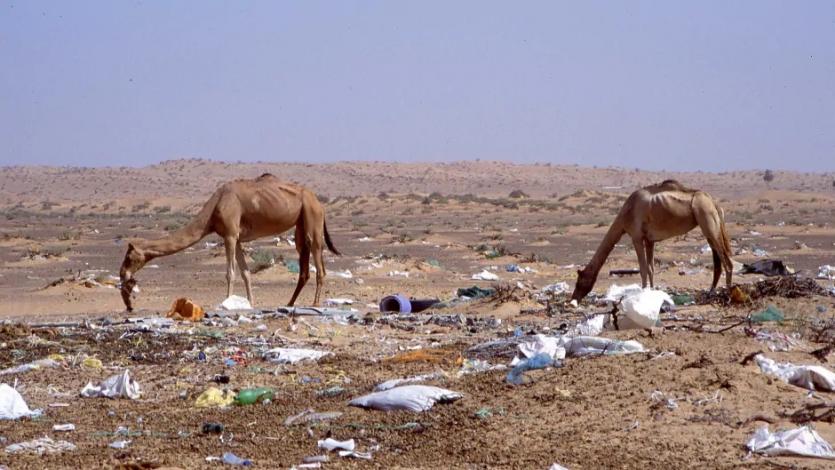Camels feast on garbage in the desert outside Dubai
Plastic pollution is contributing to the suffering of camels
By Patryk Krych | The World Daily | DECEMBER 22nd 2020
We know that plastic pollution is harmful to the environment and wildlife, but something that’s never been considered until recently has been put up to study in the Journal of Arid Environments. What the study’s revealed is that there’s been an increase in camels dying due to plastic pollution.
What the study had discovered was a large increase in what it called a “tightly packed collection of indigestible materials, which can include plastics, ropes other litter, and salt deposits, that is trapped in the stomach or digestive tract, forming a large stone-like mass” residing in camels in the United Arab Emirates. The term ‘polybezoar’ was applied to describe this mass.
Upon study of the carcasses of around 30,000 camels since 2008, it had been discovered that at least 300 of them possessed what could be defined as a polybezoar, that had by some means contributed to their deaths. They explained that the build-up of plastic can lead to a condition called sepsis, initiated by the resulting bacteria that forms in the camels gut.
Sepsis is a condition that occurs upon the immune system’s overreaction to any sort of infection, thereby causing often severe damages to the body’s own organs and tissue.
“They range from the size of a basketball to roughly a large suitcase,” said study co-author Marcus Eriksen, about the polybezoar found in the camels. “I’ve got five of these in my garage. One of them weighs about 80 kilograms. It’s massive, a lot of ropes and plastic bags. I’ve got one that’s … as big as my torso, like a giant potato. I cut it in half, and through and through, it’s only plastic bags. Between, I’d say, between 2,500 and 3,000 plastic bags, all compressed.”
Eriksen is an environmental scientist at the 5 Gyres Institute in Santa Monica, Calif. He, along with camel expert Ulrich Wernery and their colleagues who all worked on the study have been trying to get the message across that marine animals and birds are not the only species that suffer from plastic pollution – that land mammals are just as susceptible.
“We unearthed this mass of plastic, and I was just appalled. I couldn’t believe that — almost did not believe that — a mass as big as a medium-sized suitcase, all plastic bags, could be inside the rib cage of this [camel] carcass,” he added. “We hear about marine mammals, sea lions, whales, turtles and seabirds impacted, but this is not just an ocean issue. It’s a land issue, too. It’s everywhere.”
Thus far, the figures found by the study represent only 1% of the camel population in the United Arab Emirates. A number that may not seem high, but is symbolic of thousands of camels, all of which are likely to suffer a painful death. This is only accounting for the number of camels with polybezoars in their guts however – the number with any general amount of plastics ingested could be much higher.






